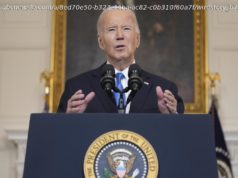When the Big Ten announced Thursday its plan to limit fall sports competition to only its 14 member institutions as a way to navigate the…
When the Big Ten announced Thursday its plan to limit fall sports competition to only its 14 member institutions as a way to navigate the fallout from a pandemic, the continental divide that exists at the top division of college football only widened some more.
In the four months since the novel coronavirus pandemic became a significant threat, it has taxed the health-care system, upended the economy, disrupted education and changed how this country operates.
But it also has exposed the fault lines and systemic problems that have always existed within the NCAA’s most popular sport.
[ Big Ten commissioner admits there might not be sports this fall]
The schools attached to the Power 5 conferences — with their huge TV contracts, self-sustaining athletic departments and deep networks of donors — have long lorded over the programs populating the lower-level leagues.
The Group of Five has never had a team qualify for the College Football Playoff, and this year it surely will be excluded from much more. Following the Big Ten’s announcement, reports began to leak that the ACC and Pac-12 will soon follow suit by bringing competition in-house.
Given the uncertain climate created by the spikes in COVID-19 tests it makes sense to do so.
Explaining its rationale, the Big Ten said in a statement: “By limiting competition to other Big Ten institutions, the Conference will have the greatest flexibility to adjust its own operations throughout the season and make quick decisions in real-time based on the most current evolving medical advice and the fluid nature of the pandemic.”
[ Nonconference opponents like Central Michigan to lose millions of dollars]
There is also greater opportunity to establish control and eliminate variables, to enforce uniform policies and institute standardized health protocols.
Start
United States
USA — mix Big Ten's decision to keep games in-house shows how divided college football...






